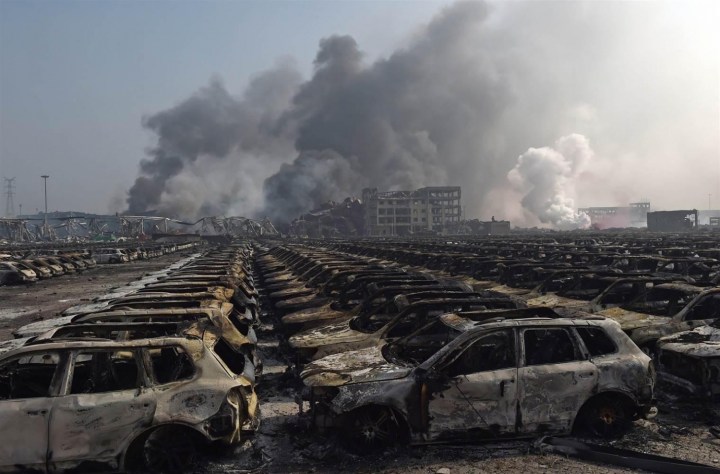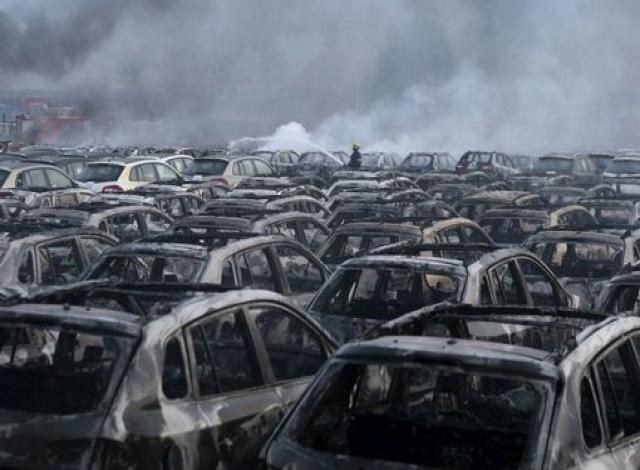
According Automotive News, approximately 8,000 just-assembled cars awaiting shipment were destroyed in the chemical explosion, as the photos show row after row of new Hyundais, Kias, Volkswagens, Renaults, Toyotas, and others scorched by the flames. Hyundai Motor Company was seemingly the unluckiest carmaker of the lot, as some 4,000 of its vehicles were demolished.
VW was hit very hard as well. Chinese sources have reported approximately 1,065 Touaregs, 114 Golfs, 391 Beetles, 84 up!s, 257 Tiguans, 39 SportsVans, 28 Magotans (essentially Passats), and 770 other vehicles have been effectively reduced to scrap metal. Additionally, Renault is believed to have lost around 1,500 automobiles, which adds up to about $33 million in value.
The initial eruption reportedly emanated from a warehouse used to store toxic chemicals on August 12, but a second, much larger explosion followed soon after. Chinese media has estimated the first blast was equivalent to about 3 tons of TNT, while the second measured in at a devastating 21 tons. As of this writing, the exact cause is still being investigated.
While the human toll is unquestionably the most tragic element to this story, the ruined car lot is an encapsulation of how incidents like these affect different industries. Being a port city, Tianjin is the entry point for a huge quantity of China’s imported goods, including cars, airplanes, petrochemicals, textiles, and metalworking. In 2014, the city’s GDP measured in at $255.95 billion.
Editors' Recommendations
- Ford recalls 100,000 hybrid cars over fire risk
- TCL’s giant 98-inch 4K TV hits CES — and stores — for under $8,000
- Apple in talks with Hyundai over possible car, automaker confirms
- Tesla delivers first electric cars from its new factory in China
- Nikon apparently can’t make enough of its $8,000 58mm f/0.95 lens



